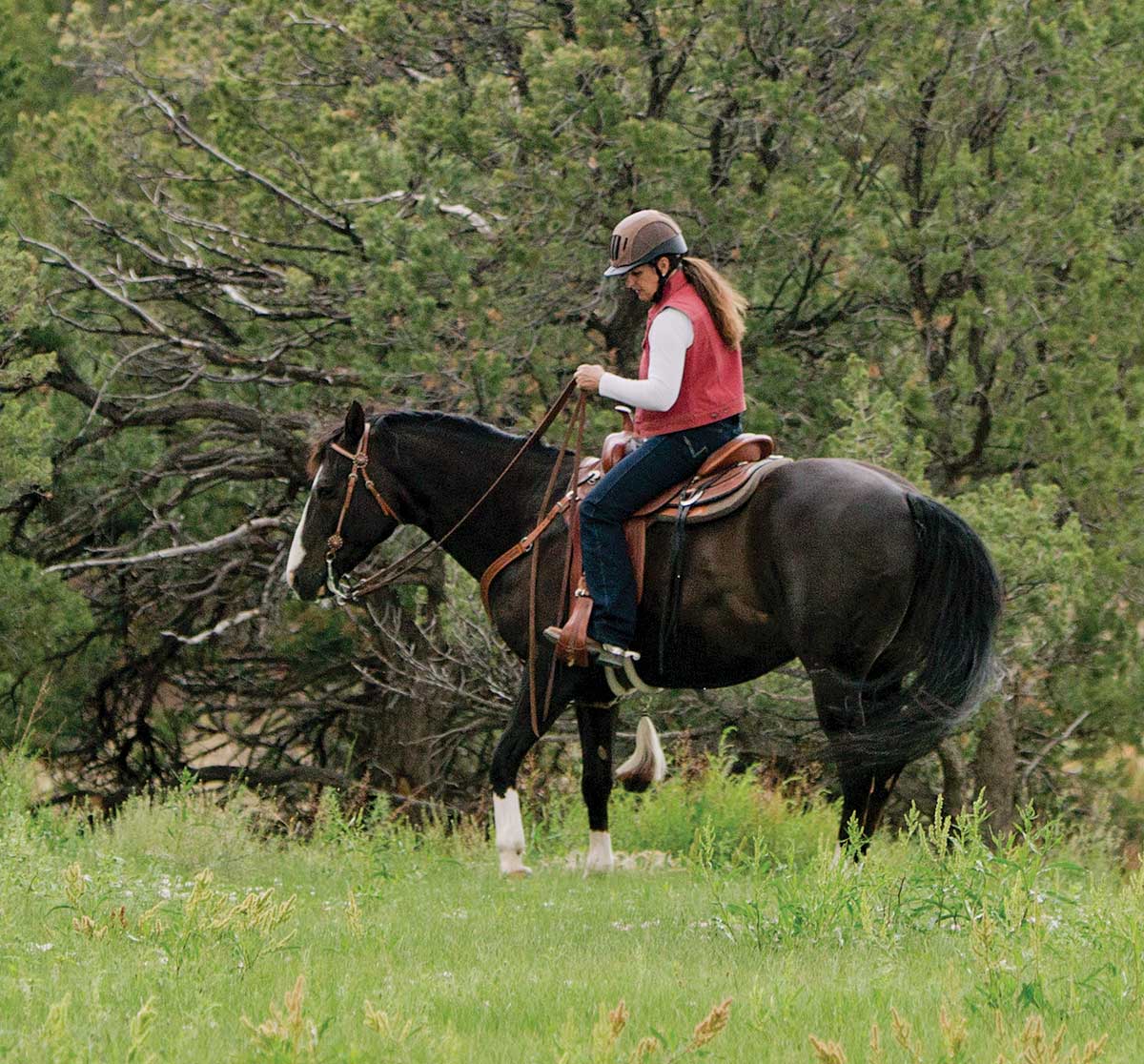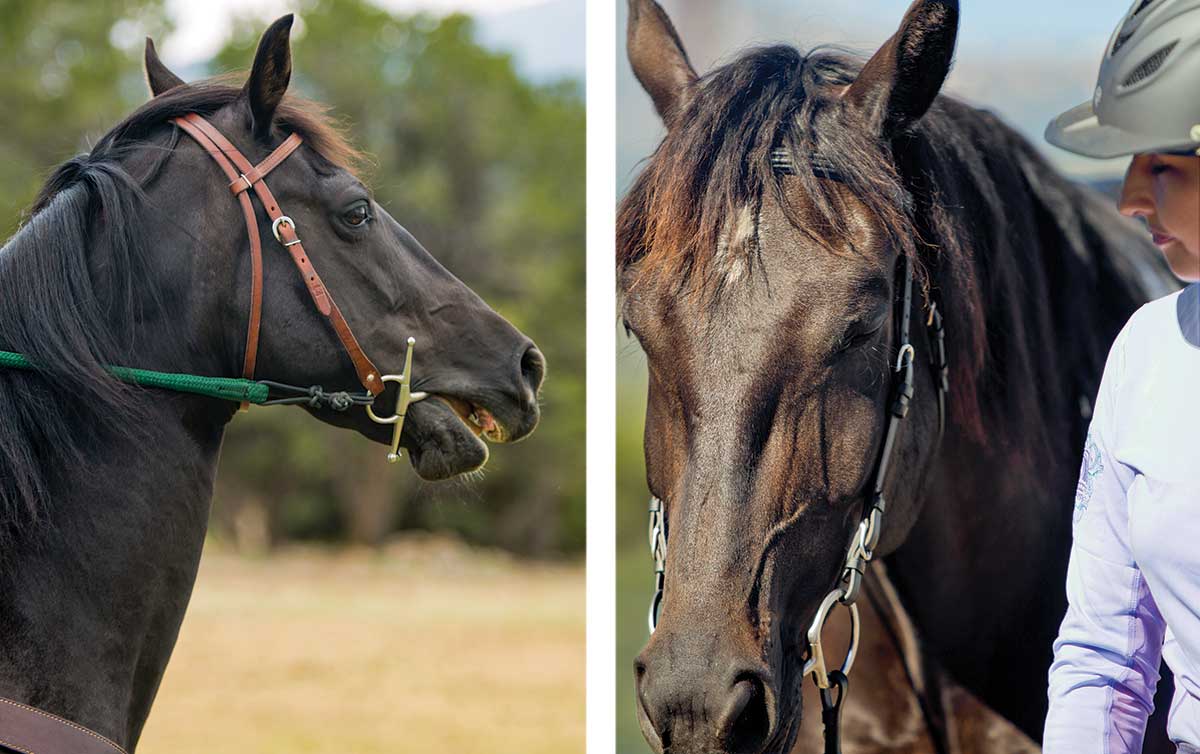
Sometimes, the safest, smartest, even boldest thing you can do on the trail is to turn around and go back to your barn or trailer. Doing the right thing for you, your horse, and your riding buddies shows leadership.
There’s no shame in turning back if that’s the safest choice. No one except you has dictated what trail you’ll ride on or at what point you’d planned to turn back. It’s responsible to minimize injury risk when you’re far from help.
Here I’ll give you the tools you need to decide whether to turn around or press on, while remaining your horse’s “herd leader.” First, I’ll help you evaluate whether your horse’s irregular behavior might be due to a training issue. Then I’ll go over several instances when you should turn around for the good of the horses and riders in your group. Finally, I’ll give you my guidelines on whether you should lead your horse or stay aboard in a challenging situation.
Is It His Training?
Is your normally calm horse suddenly acting up? He may be showing you he’s in pain or sensing something you can’t see. If in doubt, turn around for safety’s sake. However, if he seems healthy and sound, try addressing his behavior through training.
For instance, if your horse is jigging, sit deeply, and pull back once on the reins, then allow him to move forward calmly, on a loose rein. If he looks to one side, steadily correct him by using the opposite rein.
If your horse is acting jumpy, keep his focus on you. Don’t allow him to look around. Use your reins and legs to keep his nose in front of his chest and to go in the direction and at the speed you dictate. Adjust your posture to show you’re in charge—sit tall, look where you want to go, and breathe!
If you’re riding a young horse new to trail riding, don’t overdo it. You want him to have a good trail experience. Pushing him to the point of fearfulness or soreness won’t help him perform better on future rides. Work through a spook or two, then call it quits when he relaxes even for a moment.
Reward your horse with rest or a turn for home only when he’s compliant. This doesn’t mean you must correct all training problems before turning around. Select a moment when he relaxes or slows. If his head is down as you walk on a loose rein, even for a short time, this shows he’s tuned in to you.
Your horse didn’t know the planned route. You won’t teach him bad habits by turning for home.

Time to Head Back
If the trail becomes treacherous or a horse or rider is suffering, it’s time to cut the ride short. If there’s an injury, your duty is to get help as soon as possible. In an emergency, don’t worry about your horse’s training—just find a safe spot to turn around.
Health concerns include mental health. If the chosen trail causes anxiety for any rider in your group, turn around or find an easier route.
Don’t let fear of being judged influence your decision. If you’re ready to ride on through a little fear, and can do so safely, that’s great progress. If you’ve ridden far enough and want to end on a good note—that’s fine too! Be proud of your accomplishments, especially if you’ve achieved a new riding goal.
Some things are out of your control. Turn around if inclement weather causes slick, treacherous footing. If there’s lightning, immediately head for lower elevation.
Lead or Ride?
When your horse acts up and you get scared, it might feel safer to get off and lead him. But it’s not always safe to lead your horse on the trail. Often, it’s safest to stay on top, such as when there’s dangerous footing.
However, in good terrain, there’s nothing wrong with leading your horse through a difficult situation rather than fighting him from the saddle. He’ll be braver with you on the ground, following you. With you on his back, he is in the first line of attack.
If you dismount, make sure there’s a safe place to remount down the trail. And keep in mind that a nervous horse may jump on top of you, thinking the place where you’re standing is the safest place to be.
Overall, trust yourself! It’s always better to end on a good note and want to ride again another day.
Trainer and clinician Julie Goodnight, Poncha Springs, Colorado, hosts RFD-TV’s, Horse Master. Her book Goodnight’s Guide to Great Trail Riding is available at EquineNet
workStore.com. Learn more about Julie’s program and training methods at juliegoodnight.com.






